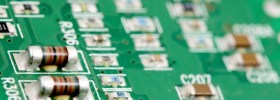Connected technologies are disrupting the business world dramatically and making it more easier than ever for people to run their own companies. However, the potential doesn’t just come from atypical devices such as laptops, tablet PCs and smartphones.
There’s plenty more innovation out there creating waves in a range of different industries. Beacon technology is a prime example, and it’s attracting significant interest from companies all over the world. These are Bluetooth-based devices that can broadcast or receive data within close proximity.
In most instances, beacon tech has two parts. First, you have a sensor that can collect and distribute information. The latter acts as the broadcaster. Smartphones loaded with compatible apps form the second part. They receive the information from beacons.
With all this in mind, beacons offer a lot of potential to businesses, especially those operating in consumer-oriented sectors. Companies can use this technology to provide existing customers with useful information and to attract new ones. Picture this. You walk past one of your favourite shops and are sent a message to notify you about an ongoing sale.
Beacon tech can provide you with lots of useful data, which presents an incredible opportunity for businesses. If you implement this innovation in the workplace, you can get access to information that’ll help you make better decisions.
Limitless potential
Beacons are highly capable devices, and when they’re paired with third-party Bluetooth devices, the potential is limitless. Welsh tech company GCell produces a variety of iBeacons for different industries and uses. Barry Jenkins, a director at the firm, says they can transform customer experiences, efficiency and accuracy.
“Beacons fixed in static environments can provide micro-location intelligence about a user of a smartphone to enrich a customer experience. A good example of this is fixing a beacon to the entrance of a stadium so that when fans with the team app installed on their smartphone walk by the beacon, it activates in-app content such as an audio welcome message from the team captain,” he tells us.
“Beacons can also be located on moveable assets (personnel or equipment) for real-time location systems (RTLS), to increase operational efficiency and optimising workforce. They can even provide micro-location accuracy of the asset on a system that is hugely scalable and lower cost.”
Improving productivity
Data science and intelligence marketing agency Profusion is one of the companies using beacons internally. Yariella Coello, head of consultancy, explains that the firm is using the technology to track employees in a bid to improve work processes.
“Beacons are one of those inventions under the Internet of Things (IoT) umbrella that tread a fine line between gimmick and goldmine. If used correctly, beacons can be a great tool for all businesses, but the key to using them effectively is to understand their potential in the first place,” she says.
“We’ve been using beacons in our offices to test the possibilities and limitations of the devices. So far, we’ve discovered they work best if you distribute them across the workplace and don’t use them in isolation. Like any data source, you only get real value and insight from a beacon when you provide enough context.
“Our beacons are used to monitor how people move around our offices. From this information you can find out the best configuration for desks and the best areas for a good team brainstorm, where to place communal equipment like printers, and even the pathways and areas that are a fire hazard. You can also use beacons to send key information and promotions to employees – the latest canteen offerings or safety and training information, for instance.”
Revolutionising marketing
Technology is impacting marketing processes hugely, but beacons present firms with even bigger opportunities. Simon Jones, head of program and product at Proxama, says beacons are becoming one of the most effective and important innovations in proximity marketing.
“Beacons have largely trumped QR codes and near field communication (NFC) tags – other major technologies for proximity marketing – for utility and consumer engagement by reducing overall friction in the customer experience,” he says.
“With beacons there is much less friction than with other options, with consumers receiving notifications and relevant content automatically to a brand, retailer, or venue-specific native app suited to their mobile device. But how do brands and retailers ensure they strike the right balance and provide an optimal consumer experience?
“They will need to process consumer insights into what the right level of contact is, and be transparent about how much, and how often, to be in contact. Fundamentally success relies on realising that proximity marketing is at its heart a ‘pull’ technology; whether by using native apps or web apps, businesses need to convince prospective customers they wish to be a participant in the first place.”
Business is changing all the time, and if there’s one thing that’s certain, companies need to implement digital strategies in order to stay one step ahead. And there’s no doubt that beacons are one of the most exciting technologies to emerge in enterprise. They’re fundamentally changing the way businesses work and communicate with customers.









